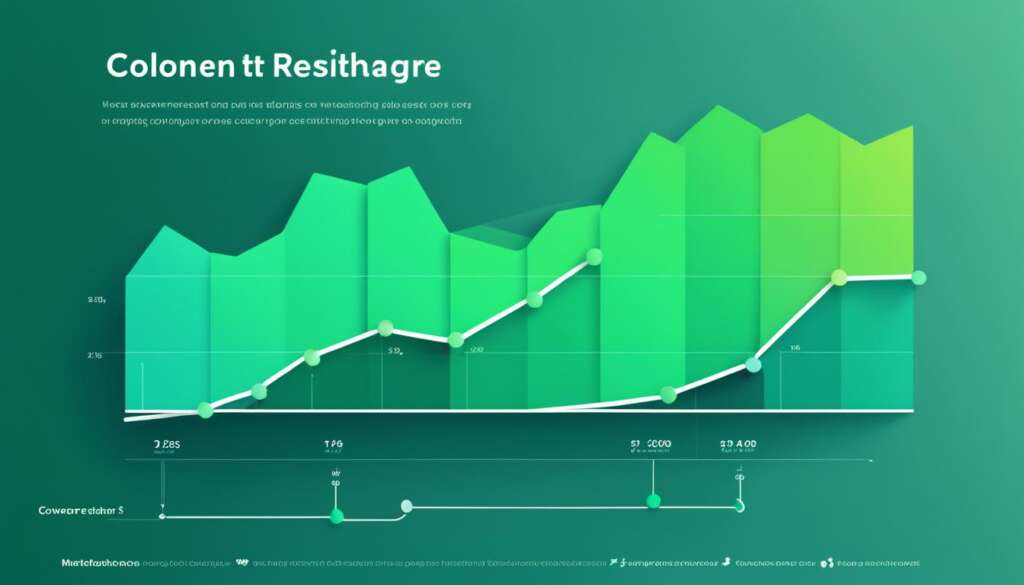Table of Contents
Responsive design is a flexible and adaptable website design approach that automatically adjusts to fit different screen sizes and devices. It has been proven to boost conversion rates and provide a positive return on investment (ROI).
Case studies have shown that responsive websites lead to increased visibility, higher conversion rates, a competitive edge, cost savings, and improved SEO rankings. Brands such as Lovehoney, Bench, and State Farm have experienced significant conversion rate increases after implementing responsive design.
Overall, investing in responsive design can yield valuable ROI and enhance conversion rates.
The Importance of Responsive Design for Mobile Users
In today’s digital world, having a mobile-responsive website is essential. Over 50% of web traffic now comes from mobile devices, and this number is expected to grow. A mobile-responsive website ensures that your site displays properly on all devices, increasing visibility and allowing you to be easily discovered through mobile search.
Not only does a mobile-responsive website improve user experience, but it also leads to higher conversion rates. Responsive design provides easy navigation and quick load times, creating a seamless user experience that encourages visitors to stay on your site and convert.
Additionally, having a mobile-responsive website gives you a competitive edge. It shows that your brand is modern and up-to-date, meeting the needs of your audience who are increasingly reliant on mobile devices for browsing and purchasing. By investing in a mobile-responsive website, you demonstrate that you prioritize user experience and adapt to the ever-changing digital landscape.
Why Mobile Responsiveness Matters
A mobile-responsive website has several benefits:
- Increased Visibility: By ensuring that your website displays properly across all devices, including smartphones and tablets, you increase your chances of being found through mobile search. This can drive more traffic to your site and expand your reach.
- Higher Conversion Rates: Responsive design creates a user-friendly experience with easy navigation and quick load times. This makes it easier for visitors to find what they’re looking for and complete desired actions such as making a purchase or submitting a form. The smoother the user journey, the more likely visitors are to convert.
- Competitive Edge: Having a mobile-responsive website sets you apart from competitors who may not have prioritized mobile optimization. It demonstrates that your brand is forward-thinking and attentive to user needs, making you more appealing to potential customers.
Overall, a mobile-responsive website is crucial for meeting the expectations of today’s mobile-centric users. It not only provides a better user experience but also increases your visibility, boosts conversion rates, and gives you a competitive edge in the digital landscape.
Benefits of Mobile-Responsive Websites for Different Business Types
Mobile-responsive websites offer various benefits for different types of businesses. Whether you run an e-commerce website, a local business, or a B2B website, implementing responsive design can enhance your online presence and drive meaningful results. Let’s explore how mobile responsiveness can benefit each business type:
E-commerce Websites
For e-commerce websites, responsive design plays a vital role in facilitating seamless shopping experiences for customers on their smartphones and tablets. By adapting to different screen sizes and resolutions, mobile-responsive websites ensure that products and services are showcased in an optimal manner, leading to increased sales and conversions. Customers can easily browse, select, and purchase items on their mobile devices, enhancing the overall shopping convenience and satisfaction.
Local Businesses
Local businesses can significantly benefit from mobile-responsive websites by providing essential information to potential customers. With contact details, directions, operating hours, and other relevant details readily accessible on mobile devices, customers can easily find and engage with local businesses. Mobile-responsive websites enable local businesses to drive more foot traffic and increase sales by ensuring that potential customers can easily access and connect with them while on the go.
B2B Websites
Responsive design is equally valuable for B2B websites. It simplifies the process of potential customers learning about products and services and facilitates easy contact for more information. With a mobile-responsive B2B website, potential clients can access and navigate the site effortlessly on their mobile devices, leading to increased leads and sales. By providing a user-friendly and accessible platform, businesses can effectively engage with their B2B audience and build lasting relationships.
| E-commerce Websites | Local Businesses | B2B Websites | |
|---|---|---|---|
| Increased Sales and Conversions | ✔️ | ✔️ | ✔️ |
| Enhanced Shopping Convenience | ✔️ | ||
| Improved Foot Traffic and Sales | ✔️ | ||
| Efficient Lead Generation and Contact | ✔️ |
As shown in the table above, mobile-responsive websites offer unique advantages tailored to each business type, reinforcing the importance of embracing responsive design regardless of your industry.
Next, we will explore tips for creating a mobile-responsive website to ensure that you effectively leverage the benefits discussed in this section.
Tips for Creating a Mobile-Responsive Website
Creating a mobile-responsive website involves several key considerations. By following these tips, you can ensure that your website looks good and functions well on all devices, providing an optimal viewing and navigation experience for mobile users.
Use a Responsive Theme or Framework
To create a mobile-responsive website, it is important to use a responsive theme or framework. This allows your website to adapt seamlessly to different screen sizes and devices. With a responsive theme, you can ensure that your website maintains its visual appeal and functionality across various platforms.
Optimize Fonts and Buttons
One of the essential aspects of mobile responsiveness is optimizing fonts and buttons. Using large fonts enhances readability on smaller screens, making it easier for users to consume your content. Similarly, incorporating larger buttons improves user interaction on mobile devices, allowing for easier navigation and engagement.
Optimize Images for Quick Loading Times
Optimizing images for mobile devices is crucial for a seamless user experience. Large image files can slow down page loading times, causing frustration for mobile users. By optimizing images for mobile, you can ensure that they load quickly and maintain optimal image quality. This enhances the overall performance and appearance of your website on mobile devices.
Test Responsiveness on Different Devices
It is essential to test your website on various devices to identify and fix any responsiveness issues. By testing on different smartphones, tablets, and other mobile devices, you can ensure that your website looks and functions as intended across diverse platforms. This testing phase allows you to address any layout or usability issues, creating a consistent and user-friendly experience for all your mobile visitors.
By implementing a responsive theme, optimizing fonts and buttons, optimizing images, and testing on different devices, you can create a mobile-responsive website that provides an optimal user experience across various devices.
Conclusion
Responsive design has proven to be a resounding success in increasing conversion rates and delivering valuable ROI. Case studies of industry-leading brands, including Lovehoney, Nars, and Baines & Ernst, showcase the significant increases in conversion rates achieved through the implementation of responsive design.
The advantages of responsive design are numerous. Not only does it enhance visibility, but it also drives higher conversion rates, giving businesses a competitive edge. By seamlessly adapting to different screen sizes and devices, responsive design ensures a consistent and user-friendly experience, leading to improved customer satisfaction and increased sales.
Moreover, responsive design brings cost-saving benefits by eliminating the need to develop and maintain separate mobile and desktop versions of a website. It also plays a crucial role in improving SEO rankings, as search engines prioritize mobile-friendly sites for mobile searches.
Investing in a mobile-responsive website is an essential strategy for businesses looking to succeed in the digital era. By prioritizing mobile responsiveness, brands can effectively engage on-the-go audiences and drive conversions. With its proven track record of success and valuable ROI, responsive design is a must-have for any business seeking long-term digital success.
FAQ
What is responsive design?
Responsive design is a flexible and adaptable website design approach that automatically adjusts to fit different screen sizes and devices.
How does responsive design impact conversion rates and ROI?
Responsive design has been proven to boost conversion rates and provide a positive return on investment (ROI). Case studies have shown that responsive websites lead to increased visibility, higher conversion rates, a competitive edge, cost savings, and improved SEO rankings.
Which brands have experienced significant conversion rate increases with responsive design?
Brands such as Lovehoney, Bench, and State Farm have experienced significant conversion rate increases after implementing responsive design.
Why is having a mobile-responsive website important?
In today’s digital world, over 50% of web traffic comes from mobile devices, and this number is expected to grow. Having a mobile-responsive website ensures that your site displays properly on all devices, increasing visibility and allowing you to be easily discovered through mobile search. It also leads to higher conversion rates and provides a seamless user experience.
How can local businesses benefit from a mobile-responsive website?
Local businesses can benefit from a mobile-responsive website by providing essential information like contact details and directions, resulting in more foot traffic and increased sales.
What considerations are important when creating a mobile-responsive website?
When creating a mobile-responsive website, it is important to use a responsive theme or framework, use large fonts and buttons for improved readability and user interaction, optimize images for quick loading times, and test the website on different devices to identify and fix any responsiveness issues.













